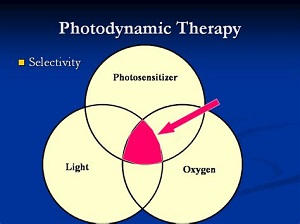Market Overview:
Photodynamic therapy is a form of treatment that utilizes photosensitizing agents and specific light sources to selectively destroy cancer cells or treat various medical conditions. It offers several advantages such as targeted treatment, minimal invasiveness, and reduced side effects compared to traditional therapies. The market for photodynamic therapy is driven by the increasing prevalence of cancer and other chronic diseases, growing awareness about the benefits of non-invasive treatments, and advancements in light sources and photosensitizing agents. The use of photodynamic therapy has expanded beyond oncology and has found applications in dermatology, ophthalmology, and other medical fields.
Market Dynamics:
The photodynamic therapy market is primarily driven by two key factors. Firstly, the rising incidence of cancer globally is fueling the demand for effective treatment options. Photodynamic therapy offers a promising solution with its targeted approach and minimal side effects. Secondly, the growing adoption of non-invasive therapies is also boosting the market growth. Patients prefer treatments that minimize the risk of complications and provide faster recovery. As photodynamic therapy meets these requirements, its demand is increasing rapidly. Furthermore, advancements in light sources, photosensitizing agents, and imaging technologies are expected to further propel the market growth in the forecast period. Overall, the photodynamic therapy market is poised for substantial growth in the coming years.
Market Key Trends:
Photodynamic therapy (PDT) is gaining popularity as an effective treatment method for various medical conditions, including cancer, dermatological disorders, and ophthalmic diseases. One key trend driving the growth of the photodynamic therapy market is the increasing adoption of PDT for the treatment of skin ailments, such as actinic keratosis, psoriasis, and acne. The minimally invasive nature of PDT, coupled with its ability to selectively destroy abnormal cells while leaving healthy tissue unaffected, makes it a preferred choice among patients and healthcare providers. Moreover, the rising prevalence of skin cancer and the growing demand for non-surgical treatment options further contribute to the market growth.
SWOT Analysis:
Strength: Photodynamic therapy offers several advantages, including targeted treatment, minimal invasiveness, and excellent cosmetic outcomes. It provides an effective alternative to traditional methods and helps in reducing surgery-related complications.
Weakness: Despite its benefits, PDT has certain limitations, such as limited depth of penetration, potential skin photosensitivity, and the need for specialized equipment and expertise, which may hinder its widespread adoption.
Opportunity: The increasing prevalence of cancer and dermatological disorders, along with advancements in PDT technology and drug development, present significant growth opportunities for the market. Additionally, the rising geriatric population and growing awareness about non-surgical treatment options further expand the market potential.
Threats: The high cost associated with PDT treatment and the presence of alternative therapies pose a challenge to market growth. Additionally, regulatory concerns and reimbursement issues may hamper the adoption of PDT in certain regions.
Key Takeaways:
The Global Photodynamic Therapy Market Demand is expected to witness high growth, exhibiting a CAGR of 11.9% over the forecast period (2023-2030). The increasing prevalence of skin cancer and the growing demand for non-invasive treatment options are driving the market growth. The market size is projected to reach US$ 2.11 billion by 2023.
In terms of regional analysis, North America is expected to be the fastest-growing and dominating region in the photodynamic therapy market. Factors such as the high prevalence of skin cancer, advanced healthcare infrastructure, and favorable reimbursement policies contribute to the region’s market dominance.
Key players operating in the photodynamic therapy market include Biofrontera AG, Theralase Technologies Inc., Photocure ASA, Quest PharmaTech Inc., Galderma S.A., DUSA Pharmaceuticals, Lumenis Ltd., Biolitec AG, IPG Photonics Corporation, Boston Scientific Corporation, Asieris Meditech Co., Ltd., PDT Pharmaceuticals, Inc., Candela Corporation, Biolase, Inc., and Photothera. These key players focus on strategic initiatives such as product launches, collaborations, and acquisitions to strengthen their market presence and gain a competitive edge.
Note:
- Source: Coherent Market Insights, Public sources, Desk research
- We have leveraged AI tools to mine information and compile it




